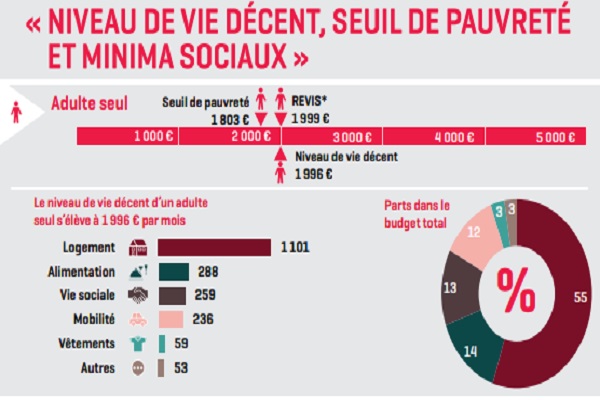 Credit: Statec
Credit: Statec
The risk of poverty continues to increase in Luxembourg with housing costs representing 42% of the disposable income of a modest household.
On the occasion of the International Day for the Eradication of Poverty on 17 October, Statec is examining Luxembourg's social cohesion. The risk of poverty rate calculated before social transfers (including old age and widowhood pensions) has reached 29% of the population. If all cash transfers are taken into account, the figure drops to 18.7% and, thanks to care vouchers, the poverty rate drops by an additional 1%-2%, according to STATEC estimates.
In 2017, the average standard of living for individuals ranged from €1,011 per month for the poorest 10% to €8,159 per month for the richest 10%, the latter of whom own 24% of the total income, compared to 3% for individuals with the lowest standards of living. Indeed, between 2005 and 2017, overall economic growth has favoured the wealthiest members of Luxembourg society.
Meanwhile, residual household income, that is disposable income after paying rent or a mortgage, was lower in 2017 than in 2012 for the most modest households. In 2017, residual income represented 58% of disposable income for these households, compared with 66% in 2012. This unequal distribution of income means that some people are at risk of or already find themselves in poverty. In 2017, the risk of income poverty in Luxembourg rose to 18.7%.
Finally, Statec found that having a job is not enough to prevent poverty. In 2017, 13.7% of workers residing in Luxembourg were at risk of poverty, an increase from previous years and in comparison to neighbouring countries.








